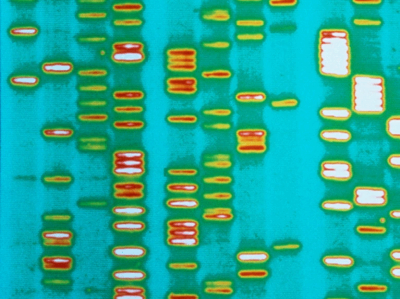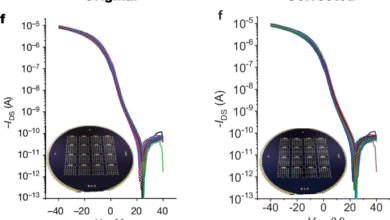
The Genetic Book of the Dead: A Darwinian Reverie Richard Dawkins Yale Univ. Press (2024)
Richard Dawkins, the ethologist, is widely known for two ideas encapsulated in the titles of his first two books: The Selfish Gene (1976) and The Extended Phenotype (1982). In the former, he argues that selection operates at the level of the gene, rather than the level of the ‘animal’ — Dawkins makes all organisms ‘honorary animals’ (a dubious distinction for, say, a sequoia tree). For Dawkins, genes have agency; an organism is a mere vehicle that genes use to make more genes. In the latter book, he argues that the full collection of an animal’s traits, known as its phenotype, should extend beyond the boundary of the body to include behaviours and their outcomes. Examples range from beaver (Castor spp.) dams to the unfortunate life of the marsh warbler (Acrocephalus palustris) that is duped into receiving, incubating and raising eggs of the cuckoo, a completely different bird.
It’s time to admit that genes are not the blueprint for life
Most of his books have since been developments and reframings of these ideas, and his latest work, The Genetic Book of the Dead, is one of these. The titular allusion to ‘books of the dead’ — ancient texts meant as guides for passing from death to the afterlife — isn’t especially apt. As a prominent atheist, has there ever been an author less concerned with the afterlife? Dawkins’s real interest is the long-dead animals of the past, who leave their fossil impressions in clay — a book by, not of, the dead.
More productive for him is the image of the palimpsest, an ancient scroll or tablet from which the text has been scraped away to make room for fresh messages. Where the erasure is incomplete, ghosts of earlier texts peek through the veil, sending shadow messages forward to later readers. Analogously, bodies and genomes — phenotypes and genotypes — often reveal things about their ancestors. Think of the vestigial floating leg bones in a whale, or the scraps of Neanderthal DNA afloat in the genomes of modern Europeans.
Dawkins extends this textual metaphor to suggest that we can “read” an organism for clues as to its forms, functions, environment and history. Comparative anatomists have been doing this for centuries with body parts, and geneticists are beginning to do it with genomes. Dawkins invents a corny “scientist of the future”, named “SOF”, on whom he projects his speculations of what genomics might someday be capable of. None of this is very helpful in understanding evolution. The central metaphors of earlier books, such as The Blind Watchmaker (1986) and The Ancestor’s Tale (2004), did more analytical work for him.
Survival of the nicest: have we got evolution the wrong way round?
Like those books, this one recapitulates the basics of Darwinian evolution, the selfish gene and the extended phenotype. He explains them crisply, sometimes lyrically, with examples from natural history. Although the arguments are familiar, the animal stories are often marvelous. It’s easy to forget, perhaps, what a fine natural-history writer Dawkins is. He gamely brings up the palimpsest or the book of the dead now and again, but I found it forced and gimmicky. Metaphor can be a powerful tool for gaining insight into a complex subject, but push it too hard and it shatters.
Dawkins is an observant Darwinian and an unapologetic adaptationist — one who thinks that essentially any trait you can observe or measure reflects the action of natural selection. Biologist Stephen Jay Gould called this view the Panglossian paradigm (S. J. Gould and R. C. Lewontin Proc. R. Soc. Lond. B 205, 581–598; 1979). For Dawkins, as for French philosopher Voltaire’s endlessly optimistic Dr. Pangloss, “all is for the best in this best of all possible worlds” (Candide, 1759). Hence, to Dawkins, almost any organism is perfectly adapted to its environment, with the exception of several of what he calls “constraints on perfection”.
For example, in mammals, the recurrent laryngeal nerve — which controls breathing, swallowing and the vocal cords — seems far from ideal. It overshoots the larynx and is halfway to the sternum before it doubles back up through the neck to reach its targets. This might seem to be bad design, but it’s explained by evolutionary history. The nerve originated in fishes, which have no necks. When reptiles invented necks, the short arc of the laryngeal nerve was pulled and stretched into its current loopy form.

Richard Dawkins argues that behaviour, such as dam building, count as a phenotype.Credit: Rosanne Tackaberry/Alamy
Evolution has to work with what it’s got; it has no way to go back to the drawing board and redesign that nerve along a more direct path. “Imagine,” Dawkins writes, “what the jet engine would look like if the designer had had to start with a propeller engine on his drawing board, which he then had to modify, step by tinkering step, until it became a jet engine.”
This is a fine way to make the point that evolution must work inside the constraints of history. But why must we invoke this language of designers and engineers and perfection, rather than just writing about evolution as a historical process?
I suspect it’s a constraint on the perfection of Richard Dawkins books. Dawkins’s previous works include several polemics against creationism, such as The God Delusion (2006). In that work, he used the language of ‘perfection’ and ‘engineering’ to hammer home why nature isn’t designed. Vestiges of those arguments peer through his present argument, for example in his occasional sideswipes at creationists as well as at the very language of engineering, design and perfection. The Genetic Book of the Dead is itself a palimpsest of Dawkins’s evolving evolutionary thought.
Vestigial phrases
Another constraint on Dawkinsian perfection is his insistence on using the language of “genes for” specific traits. He has long denied being a genetic determinist in the literal, philosophical sense. Yet, since The Selfish Gene, he has indulged in an orgy of deterministic language. He refers to “genes for expert climbing”, “genes for penis size” and “genes for short carnivorous intestines whose cells secrete meat-digesting enzymes”, among many others.
Now, Dawkins knows perfectly well that these genes don’t actually exist. “There are really really really only genes for changed proteins,” he writes, reassuringly. His “genes for” is a figure of speech, a metaphor, of a piece with the “selfish gene”.
But this isn’t merely a harmless way of popularizing complex ideas. First, it’s increasingly out of step with a modern understanding of the gene and of biology as being infinitely flexible, subtle and responsive to the environment. Epigenetics, for example, modulates gene expression in subtle ways we can’t begin to predict. Today, the genome looks less like a vault storing the family jewels and more like a “sensitive organ of the cell”, in cytogeneticist Barbara McClintock’s prescient phrase.
Forever young: what science can and can’t tell us about cheating ageing
Source link






